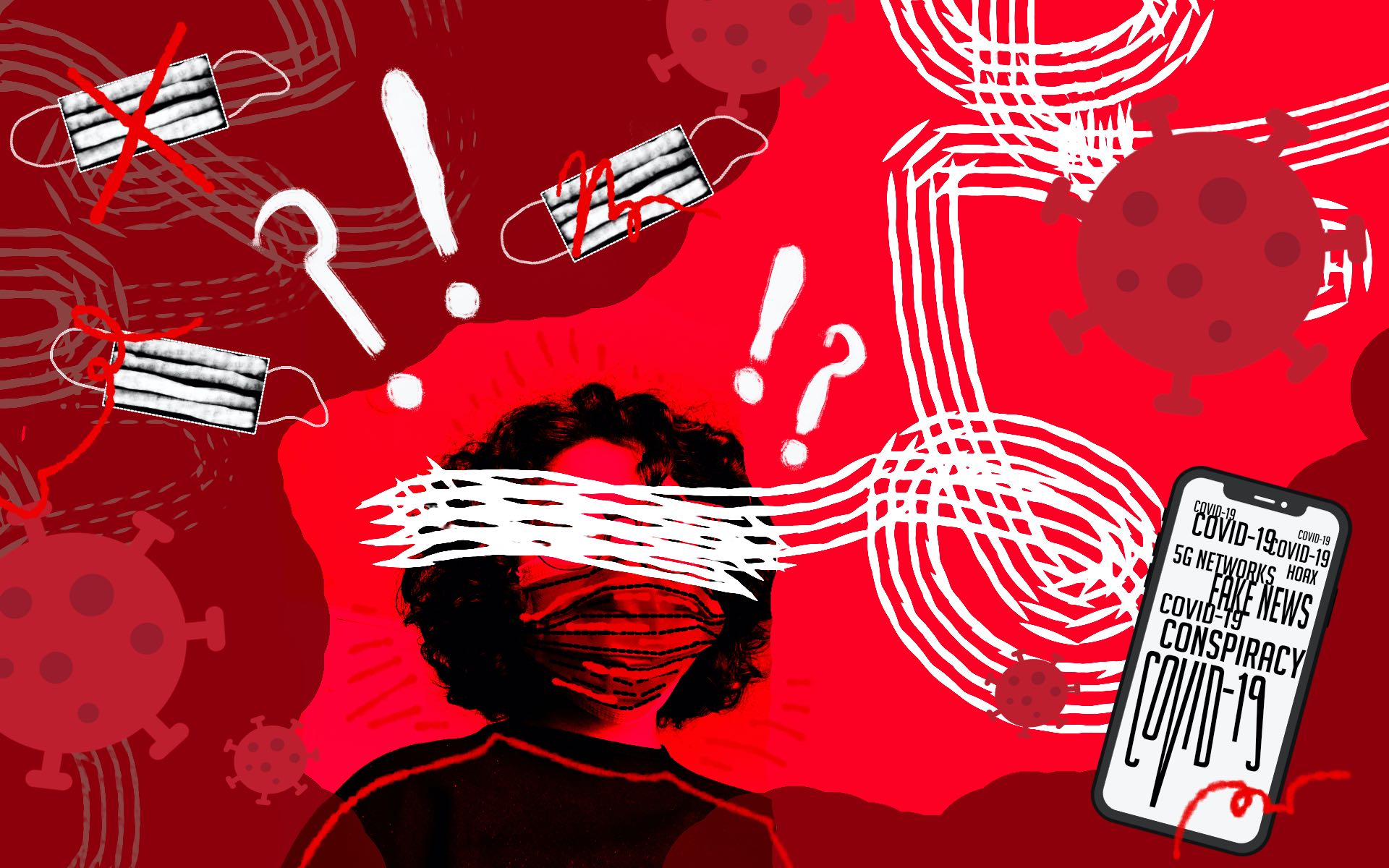If one was to pay attention to recent events, it would appear that QAnon zealots, anti-WHO “activists,” and alien truthers have a lot in common. Two weeks ago, all three groups were active participants in anti-mask protests that occurred in Montreal, where Q-related shirts and anti-mask signs seemed to take up equal space. This was not the first protest of its kind within the city, with a similar event taking place in August. The absurdity of protesting against important health measures because of a belief in aliens, pedophile cults, and a New World Order may seem mildly amusing to students. But there is a danger to detached mirth. When conspiracies oppose science and put others’ health at risk, McGill students have a responsibility to debunk and reject these ideas where they can and diligently adhere to public health guidelines.
To be clear, not all conspiracies are harmful, and enjoying some of them is not wrong. A great example is the glitter conspiracy of 2018. The New York Times published an article about the industry, reporting that one of the most prominent producers of glitter, Glitterex, was secretive about where the vast majority of its glitter was going. Some investigated this strange industry secret and eventually discovered the truth: The glitter was being used for car and boat paint. While glitter purchases are not exactly the most esoteric topic to theorize on, no one is going to become a glitter truther, or put anyone at harm over it. The same cannot be said for QAnon.
Starting as a series of cryptic and bizarre posts on 4chan’s /pol/, the platform’s political discussion board, the QAnon conspiracy has since garnered many followers and widespread press coverage. It puts forth that U.S. President Donald Trump is battling a circle of sinister, pedophilic elites, including top Democrats who he will purge in an event known as “the Storm.” All of this is being communicated to the loyal public by the supposed means of a high-up figure, the supposed poster, “Q”. As some have noted, the conspiracy has drawn in many adjacent theories, creating a big-tent scenario where different beliefs blend and morph, often into more dangerous variants. Most related to COVID-19, of course, are the mask-related theories.
Some of the more insidious theories take elements of the everyday and peddle them as truth. For example, some people find it hard to breathe in masks which has led to theories stating that masks lead to brain damage by lowering one’s oxygen levels. This is false, but the spread of this claim has not stopped. Another popular theory states that COVID-19 is an exaggerated threat, and that masks and current safety guidelines are meant to control the public, rather than the spread of the virus. This is also incorrect.
COVID-19 is not an exaggerated threat: Of an estimated 32.3 million cases worldwide, there is roughly a three per cent death rate. In Canada, those numbers at press time are 149,094 cases and 9,249 deaths. That is closer to six per cent. And in Quebec, that number is closer to 8 per cent, with 5,814 deaths from 70,307 cases. Even beyond death, COVID-19 can lead to long term and severe complications.
While silly theories about glitter, aliens, and the Kennedys allow for a disengaged amusement, one cannot allow the necessary isolation of COVID-19 to dim their empathy as well. People are dying and misinformation is spreading. As residents of Montreal, as well as people who care about the wellbeing of fellow community members, the student body has to be active in its rebuttals of misinformation, as educated on the recent statistics as they can, and be dedicated to discussing these issues online. If such a rebuttal reaches just one person who is prone to these beliefs, or even is a full believer, that is one less person at risk.









